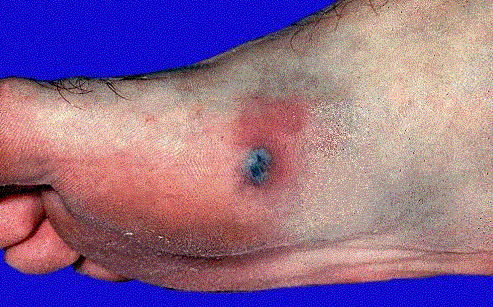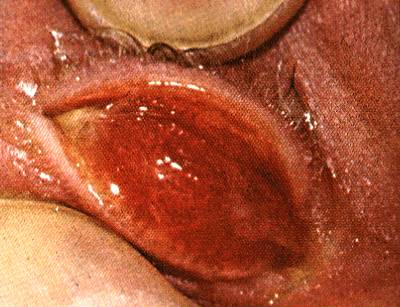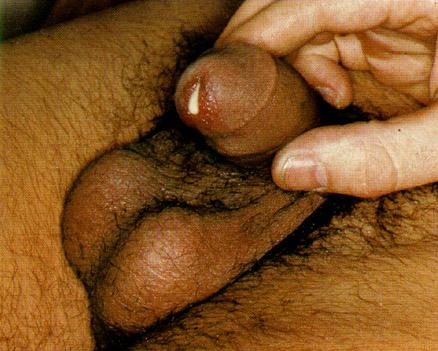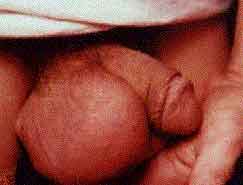Gonorrhea history and symptoms: Difference between revisions
(→Male) |
(→Female) |
||
| Line 21: | Line 21: | ||
==Female== | ==Female== | ||
Symptoms in women can be very mild or nonspecific, and may be mistaken for another type of [[infection]]. | Symptoms in women can be very mild or nonspecific, and may be mistaken for another type of [[infection]]. However, even asymptomatic females are prone to have complications due to gonorrheal infection. The symptoms include: | ||
* [[Vaginal discharge]] | * [[Vaginal discharge]] | ||
* Burning and [[pain]] while urinating | * Burning and [[pain]] while urinating | ||
| Line 27: | Line 27: | ||
* Off-cycle [[Menstrual cycle|menstrual]] bleeding, or bleeding after sexual intercourse. | * Off-cycle [[Menstrual cycle|menstrual]] bleeding, or bleeding after sexual intercourse. | ||
* Painful [[sexual intercourse]] | * Painful [[sexual intercourse]] | ||
* Severe [[pain]] in lower | * Severe [[pain]] in lower abdomen, fever (if the [[infection]] spreads to the [[fallopian tubes]] and [[stomach]] area) | ||
* | * If the [[infection]] spreads to the [[bloodstream]], [[fever]], vomiting, [[rash]], and [[arthritis]]-like symptoms may occur. | ||
If the [[infection]] spreads to the [[bloodstream]], [[fever]], [[rash]], and [[arthritis]]-like symptoms may occur. | |||
==Rectal gonorrhea/Gonococcal proctitis== | ==Rectal gonorrhea/Gonococcal proctitis== | ||
Revision as of 17:01, 6 April 2012
|
Gonorrhea Microchapters |
|
Diagnosis |
|
Treatment |
|
Case Studies |
|
Gonorrhea history and symptoms On the Web |
|
American Roentgen Ray Society Images of Gonorrhea history and symptoms |
|
Risk calculators and risk factors for Gonorrhea history and symptoms |
Editor-In-Chief: C. Michael Gibson, M.S., M.D. [1]
Overview
Gonorrhea (gonorrhoea in British English) is amongst the most common sexually transmitted diseases in the world and is caused by Gram-negative bacterium Neisseria gonorrheae. The term comes from Ancient Greek γονόρροια (gonórrhoia), literally "flow of seed"; in ancient times it was incorrectly believed that the pus discharge associated with the disease contained semen.[1]
History
Symptoms
- The incubation time varies from 2 to 14 days with most symptoms occurring between days 2 and 5 after being infected from an infected partner.
- A small number of people may be asymptomatic for up to a year. They may be completely unaware that they have caught the disease, and therefore do not seek treatment. This increases the risk of complications and the chances of passing the infection on to another person.
- Between 30–60% of women with gonorrhea are asymptomatic or have subclinical disease.[2]
Male
- Thick, copious, white, yellow, or green colored discharge from penis (also known as gleet) is the most common presentation.
- Burning and pain while urinating
- Increased urinary frequency or urgency
- Painful or swollen testicles
- scrotal pain or swelling.
Female
Symptoms in women can be very mild or nonspecific, and may be mistaken for another type of infection. However, even asymptomatic females are prone to have complications due to gonorrheal infection. The symptoms include:
- Vaginal discharge
- Burning and pain while urinating
- Increased urination
- Off-cycle menstrual bleeding, or bleeding after sexual intercourse.
- Painful sexual intercourse
- Severe pain in lower abdomen, fever (if the infection spreads to the fallopian tubes and stomach area)
- If the infection spreads to the bloodstream, fever, vomiting, rash, and arthritis-like symptoms may occur.
Rectal gonorrhea/Gonococcal proctitis
- It is usually contracted from having rough anal sex. It can be avoided by using toys instead. It may affect both men and women
- Often asymptomatic
- Anal discharge
- Pain on defecating
- Rectal bleeding.
Gonococcal pharyngitis
- Caused by oral sex with a partner infected with gonorrhea.
- Usually asymptomatic
- Sore throat.
-
Skin lesion on foot in a patient with Gonorrhea
-
Gonococcal infection of the conjunctiva in a neonate
-
Penile discharge in a patient with Gonorrhea
-
Swollen testes consistent with epididymitis in a patient with Gonorrhea
References
- ↑ Definition of the term gonorrhea
- ↑ YT van Duynhoven (1999). "The epidemiology of Neisseria gonorrheae in Europe". Microbes and Infection. 1 (6): 455–464. PMID 10602678.



